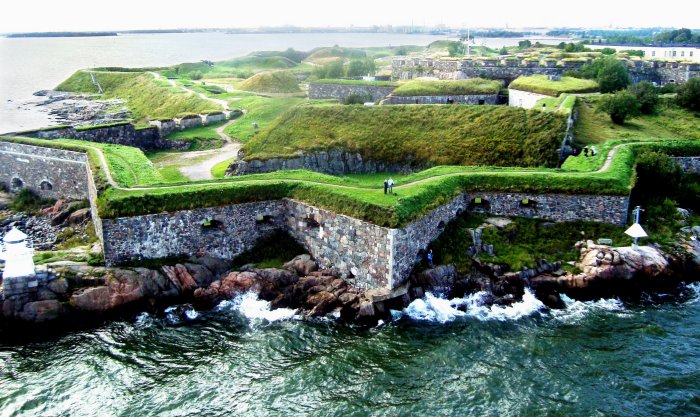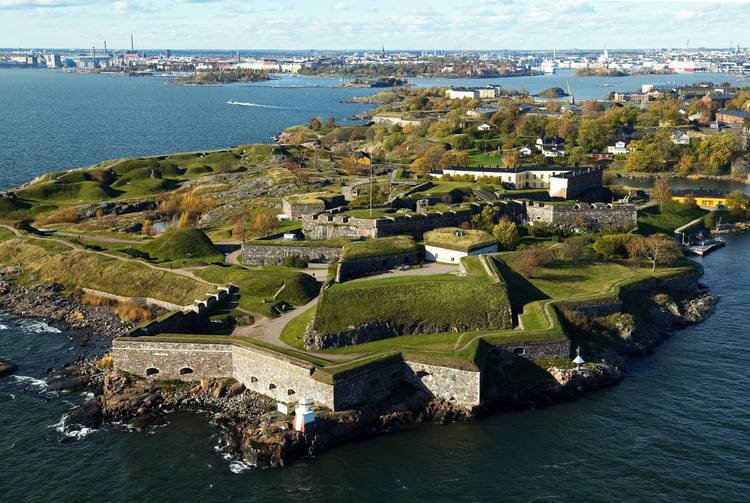Suomenlinna Fortress: Impressive ‘Castle Of Finland’ Has Rich History
Ellen Lloyd - AncientPages.com - The Suomenlinna fortress is just as impressive as rich in history. Built in 1747 by Sweden on a group of islands located at the entrance of Helsinki's harbor the fortress original name of the fortress was Sveaborg.
The landscape and the architecture of the fortress have been shaped by several historic events. Covering an area of 210 ha and consisting of 200 buildings and 6 km of defensive walls, the fortress stretches over six separate islands. The construction of the fortress was supervised by the Swedish Admiral Augustin Eherensvärd (1710-1772).
It has served to defend three different sovereign states over the years: the Kingdom of Sweden, the Russian Empire and most recently the Republic of Finland.
Suomenlinna Fortress was also known as Viapori, the Finnish translation until 1918 when it became Finnish property and its name was changed to the present one.
During the Swedish period, Viapori was considered vital in terms of defence, especially with Sweden’s declining power and in an atmosphere of increased Russian imperialism.
The purpose of the fortress was originally to defend the Kingdom of Sweden against the Russian Empire and to serve as a fortified army base, complete with a dry dock.
The sea fortress had merits as a naval base in the Russo-Swedish War of 1788–1790 (‘Gustav III’s War’), but it was not involved in actual battles.
Having avoided military engagement in the 18th century, the next century saw Viapori become the subject of an enduring Russian attack in the Russo-Finnish War, also known as the ‘War of Finland’ (1808-1809). After a three-month siege, Viapori fell to the Russians.
See also:
10 Ancient Fortresses Of Historical Importance
Battle Of Visby – Death Came With King Atterdag’s Ships
Legendary Harald ‘Bluetooth’ King of Denmark – ‘Who Made The Danes Christian’
After the Swedes vacated the fortress, Viapori along with its ships and equipment was transferred under the rule of the Russian Imperial Government.
The following year, Finland became an autonomous Grand Duchy of Russia, but Viapori remained a military base under Russian administration.
The Russians valued the Viapori and its strategically vital position. The fortress perimeter was expanded to Santahamina, Kuningassaari and Vallisaari. Barracks to house soldiers were built in the fortress, and an Orthodox garrison church designed by Konstantin Ton was completed.
Although the Russians had big plans, lack of funds halted the expansion and Viapori fell into decay.
It was not until the run-up to the Crimean War (1853–1856) that the condition of the fortress began to raise concerns. War broke out between Russia and Turkey, but England and France soon joined forces with the Turks. A combined Anglo-French fleet bombarded Viapori for two days in August 1855, and Viapori sustained heavy damage in the bombardment.
In the late 19th century and the early years of the 20th century, the fortifications of Viapori were repaired. However, Viapori continued to decline in importance, and ultimately it was just one Russian fortress among many.
During the First World War (1914–1918), Viapori formed part of what was known as the Naval Fortress of Peter the Great, designed to protect the Russian capital St. Petersburg.
With the Russian Revolution and Finland’s independence, Viapori was taken over by the newly founded Finnish government in 1918 and renamed Suomenlinna (‘Castle of Finland’).
Suomenlinna Fortress has been outside of military control since 1973. Today, this impressive place can be visited and it offers various things to see including a series of museums as well as sites such as the King’s Gate and the Great Courtyard.
Written by - Ellen Lloyd – AncientPages.com
Copyright © AncientPages.com All rights reserved. This material may not be
published, broadcast, rewritten or redistributed in whole or part without the express written permission of AncientPages.com
Expand for referencesMore From Ancient Pages
-
 Mythical Helen Of Troy: Beautiful Wife Of King Menelaus Of Sparta
Featured Stories | Jul 5, 2019
Mythical Helen Of Troy: Beautiful Wife Of King Menelaus Of Sparta
Featured Stories | Jul 5, 2019 -
 Megadrought That ‘Killed’ Green Sahara 4,000 Years Ago Crippled Southeast Asia’s Human Settlements
News | Aug 26, 2020
Megadrought That ‘Killed’ Green Sahara 4,000 Years Ago Crippled Southeast Asia’s Human Settlements
News | Aug 26, 2020 -
 Isaac Newton Believed Egyptian Pyramids Held Key To The Apocalypse – Unpublished Manuscripts Reveal
News | Dec 10, 2020
Isaac Newton Believed Egyptian Pyramids Held Key To The Apocalypse – Unpublished Manuscripts Reveal
News | Dec 10, 2020 -
 Mysteries Of The Huldufolk – The Hidden People Of Iceland
Featured Stories | Feb 1, 2022
Mysteries Of The Huldufolk – The Hidden People Of Iceland
Featured Stories | Feb 1, 2022 -
 Eugenio De Torralba – Renaissance Magician’s Dangerous Spirit Communications
Featured Stories | May 6, 2019
Eugenio De Torralba – Renaissance Magician’s Dangerous Spirit Communications
Featured Stories | May 6, 2019 -
 Nottingham Scientists Investigate An Ancient Boat Buried Under A Pub Car Park
Archaeology | Feb 15, 2023
Nottingham Scientists Investigate An Ancient Boat Buried Under A Pub Car Park
Archaeology | Feb 15, 2023 -
 Hidden Details Discovered In Picasso’s Painting The Crouching Woman
Archaeology | Feb 28, 2018
Hidden Details Discovered In Picasso’s Painting The Crouching Woman
Archaeology | Feb 28, 2018 -
 Very Rare Ancient Roman Horse Brooch Discovered In UK
Archaeology | Mar 7, 2020
Very Rare Ancient Roman Horse Brooch Discovered In UK
Archaeology | Mar 7, 2020 -
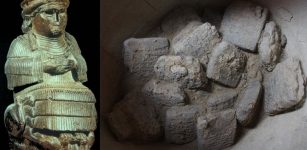 Sensational Find: Huge Cuneiform Archive Of Mysterious Ancient Clay Tablets Discovered In Iraq
Archaeology | Oct 26, 2017
Sensational Find: Huge Cuneiform Archive Of Mysterious Ancient Clay Tablets Discovered In Iraq
Archaeology | Oct 26, 2017 -
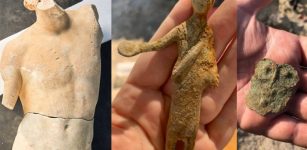 Magnificent 2 Meters Tall Marble Apollo Statue And Other Artifacts Found In San Casciano dei Bagni, Italy
Archaeology | Nov 20, 2023
Magnificent 2 Meters Tall Marble Apollo Statue And Other Artifacts Found In San Casciano dei Bagni, Italy
Archaeology | Nov 20, 2023 -
 Mysterious Rongorongo Script Remains Undeciphered – Does It Contain A Prophetic Warning?
Featured Stories | Mar 24, 2014
Mysterious Rongorongo Script Remains Undeciphered – Does It Contain A Prophetic Warning?
Featured Stories | Mar 24, 2014 -
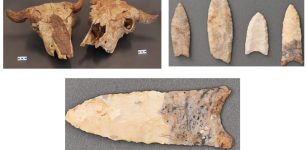 Digesta: An Overlooked Source Of Ice Age Carbs
Archaeology | Apr 24, 2023
Digesta: An Overlooked Source Of Ice Age Carbs
Archaeology | Apr 24, 2023 -
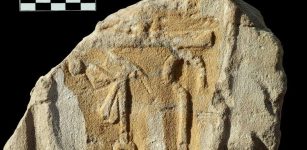 Gebel El Silsila: Remains Of Long-Lost New Kingdom Temple Found
Civilizations | May 19, 2015
Gebel El Silsila: Remains Of Long-Lost New Kingdom Temple Found
Civilizations | May 19, 2015 -
 Count Dracula: His Letters Helped Researchers Cast New Light On Health Of Legendary Figure
Historical Figures | Aug 17, 2023
Count Dracula: His Letters Helped Researchers Cast New Light On Health Of Legendary Figure
Historical Figures | Aug 17, 2023 -
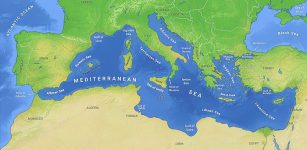 Mediterranean Migration Was Low Over 8,000 Years – New Study
Archaeology | Mar 3, 2021
Mediterranean Migration Was Low Over 8,000 Years – New Study
Archaeology | Mar 3, 2021 -
 Ancient DNA Reveals Surprises About Life Of Early Africans
Archaeology | Feb 24, 2022
Ancient DNA Reveals Surprises About Life Of Early Africans
Archaeology | Feb 24, 2022 -
 Rosicrucians’ Secret Knowledge Of Atlantis, Pyramids And Extraterrestrial Visitations
Civilizations | Apr 17, 2017
Rosicrucians’ Secret Knowledge Of Atlantis, Pyramids And Extraterrestrial Visitations
Civilizations | Apr 17, 2017 -
 Why Was The Pineapple A Status Symbol Once?
Ancient History Facts | Feb 12, 2024
Why Was The Pineapple A Status Symbol Once?
Ancient History Facts | Feb 12, 2024 -
 The Legend Of Little Deer—Interesting Cherokee Tale Of How Disease And Medicine Began, And Why The Native Americans Respect All Life
Featured Stories | May 10, 2017
The Legend Of Little Deer—Interesting Cherokee Tale Of How Disease And Medicine Began, And Why The Native Americans Respect All Life
Featured Stories | May 10, 2017 -
 Never-Before-Seen Face Of A Tattooed Tashtyk Man Hidden Behind A Gypsum Death Mask Revealed
Archaeology | Jul 17, 2020
Never-Before-Seen Face Of A Tattooed Tashtyk Man Hidden Behind A Gypsum Death Mask Revealed
Archaeology | Jul 17, 2020

